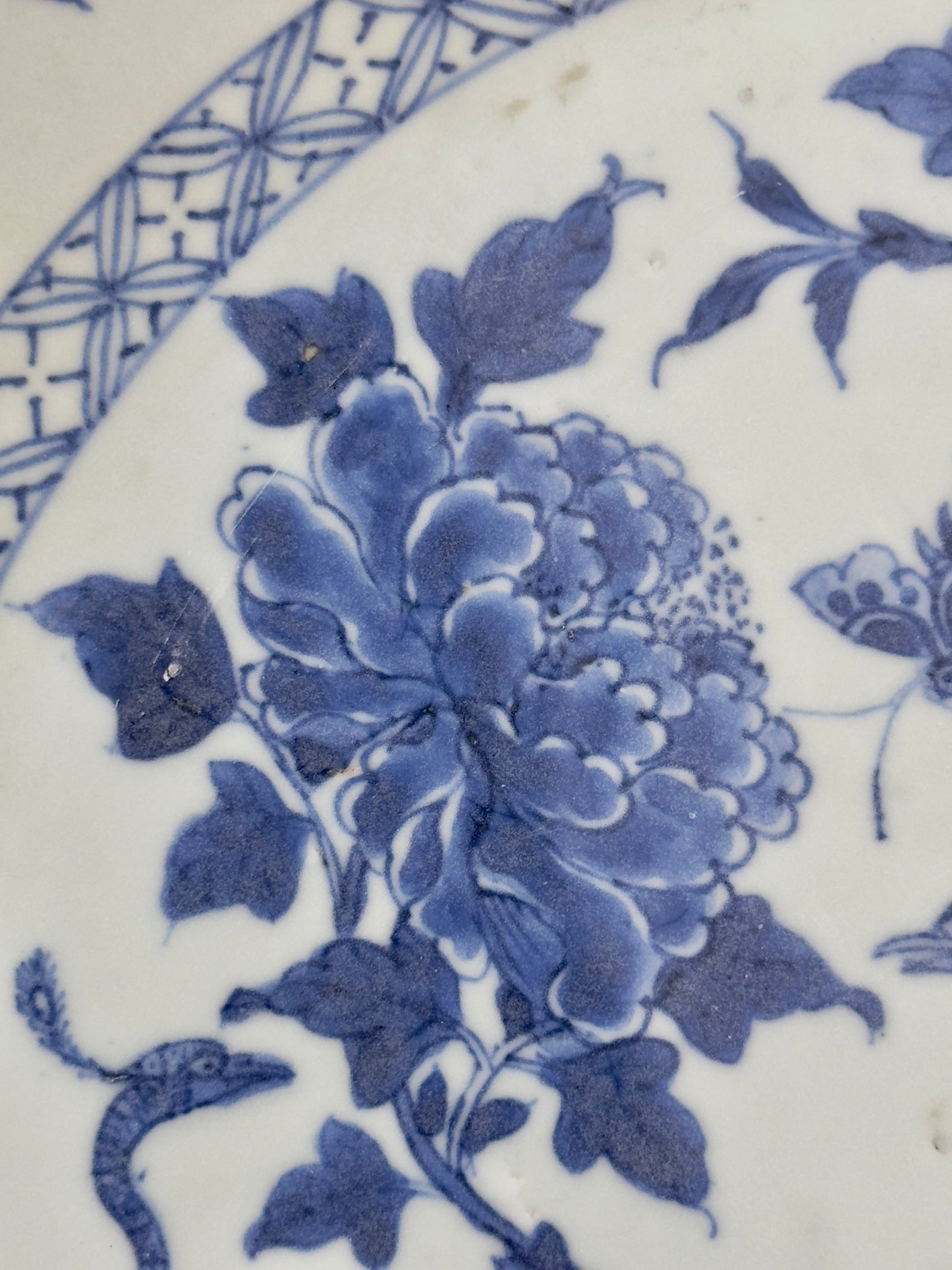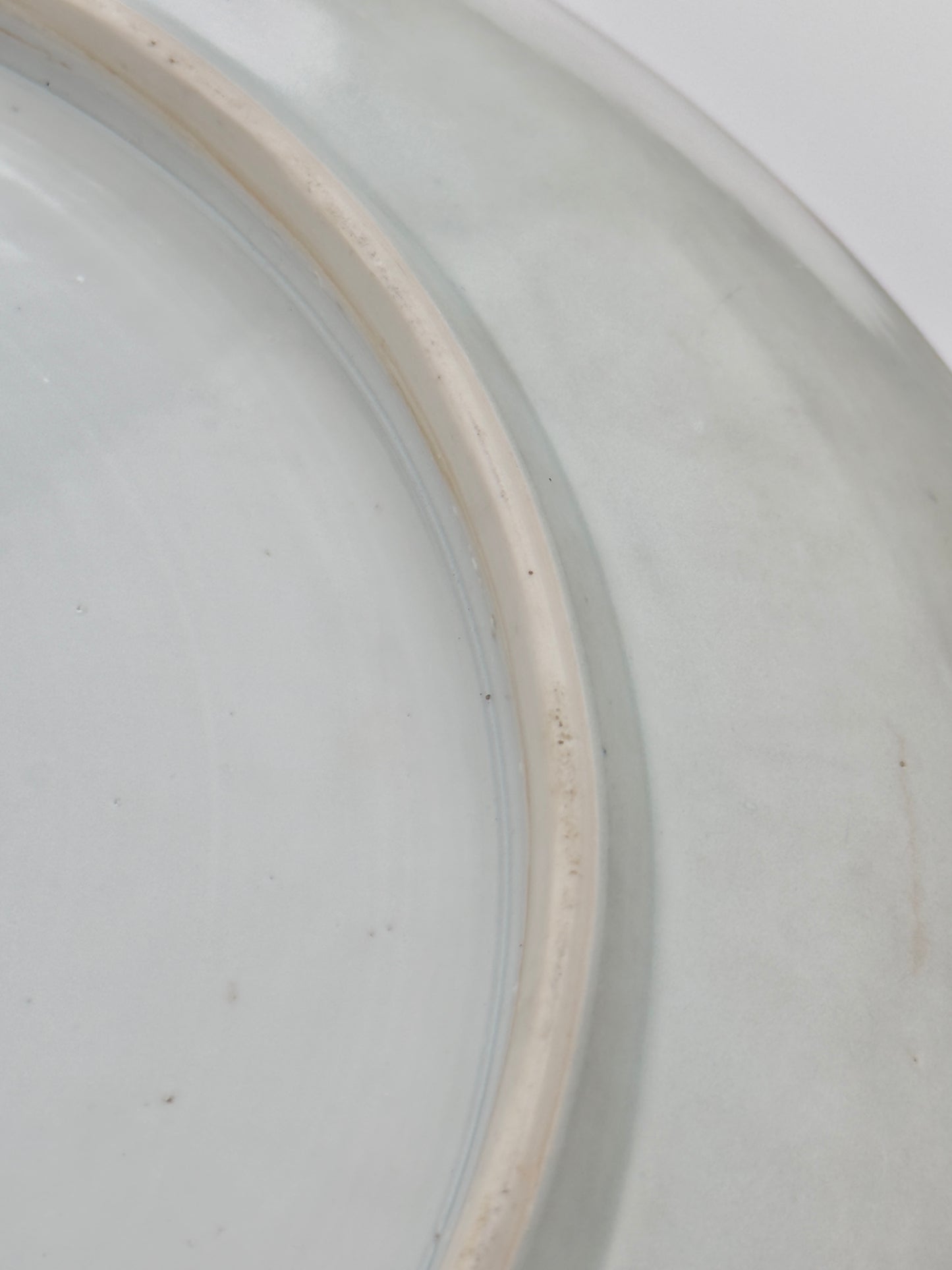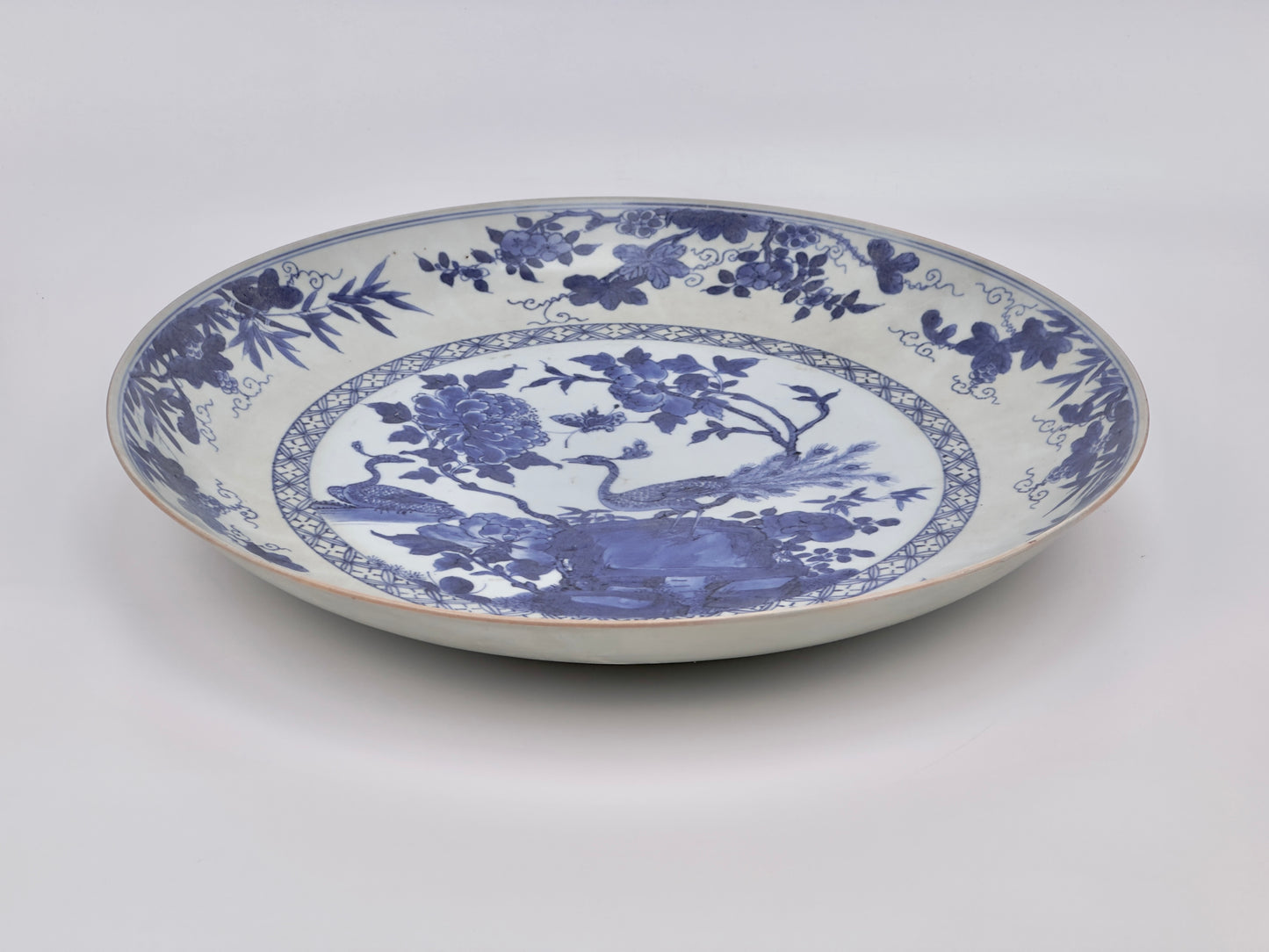PEACOCK IN SPLENDOUR PATTERN BLUE AND WHITE DISH CIRCA 1725, QING DYNASTY, YONGZHENG
PEACOCK IN SPLENDOUR PATTERN BLUE AND WHITE DISH CIRCA 1725, QING DYNASTY, YONGZHENG
Couldn't load pickup availability
A representative piece of Ca Mau ship. With a tall peacock standing on a rocky outcrop displaying his feathers to a peahen who crouches on the ground before him, the garden with lush chrysanthemum and peony bushes amongst which fly moths, butterflies and insects, the rim with a broad continuous border of fruiting vine, prunus and bamboo. It is of the same kind as the artwork featured on the cover page of the 2018 Korean Underwater Artifacts Exhibition. The illustration of this piece is very elegant, showcasing the exceptional skill of a craftsman. The wood stand is not included with the item.
Period : Qing Dynasty, Yongzheng Period
Production Date : C 1725
Made in : Jingdezhen
Destination : Netherland
Found/Acquired : Southeast Asia , South China Sea, Ca Mau ship
Size : 36.5cm (Diameter)
Condition : Good (Repair on the lower back crack, and it is currently in clean condition. And surface worn out and salty)
Reference : Double checked with reference to the original catalogues
1) Tau Co Ca Mau(The Ca Mau Shipwreck) Catalogue 2002 / The National Museum of Vietnamese History
2) THE CA MAU SHIPWRECK PORCELAIN : from the Collection of Dr.Zelnik , 2000
3) Sotheby’s Amsterdam, 2007 : Made In Imperial China / Sotheby's
4) Asian Ceramic Found along Maritime Silk Route / National Maritime Museum of Korea
* The Ca Mau Cargo
The Ca Mau Cargo refers to a Chinese cargo sunken sometime between 1723 and 1735 off the coast of Vietnam’s farthest point in the South China Sea, discovered by Vietnamese fishermen in 1998. It is believed the ship was a Chinese merchant’s cargo on its way from Canton (Guangzhou) to Batavia when it caught fire and sank. The merchant had ordered the goods on board for Dutch traders, who had limited access to China and its ports.
* Porcelain for the European Market
The Ca Mau Cargo consisted of numerous types of porcelain, chinaware and blue and white wares, all designed for the European market. Blue and white ceramics recovered from the cargo appear decorated with the so-called ‘Scheveningen landscape’, also known as ‘Deshima décor’. This motif usually depicted a traditional Dutch fishing village, executed in Chinese style. Chinese wares with Western motives were extremely popular and made to order and were known as ‘China de commande’.


































